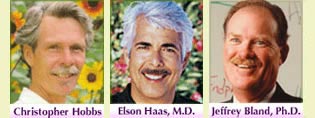Healthy Diet: The Basics
What constitutes a healthy diet is really very simple. A healthy diet emphasizes whole grains, fruits and vegetables, organic if possible. A healthy diet includes a small amount of fat, what are termed essential fatty acids, and very little, if any, meat, dairy or sweets. The USDA's new food pyramid illustrates this.
The first step toward a healthy diet is to begin eliminating those foods that are most unhealthy. These include fast food, processed foods, fried foods and any food that lists sugar in the first three ingredients on the nutrition label. Become a habitual label reader. Look for foods that are low in carbohydrates, low in sugar, low in fat and high in protein. Again, if sugar is included in the first three ingredients, don't buy it. Keep healthy foods stocked in your kitchen and you'll have a better chance of eating them. Likewise, don't buy unhealthy foods. You can splurge at a restaurant once in a while, but keep your home a healthy food zone. (Speaking of the zone, learn more about the Zone Diet, which is one of the more sensible weight loss diets around today.)
The second step in cultivating a healthy diet is to incorporate more healthy, cleansing foods into your daily meals. The mos obvious approach to a healthy and even cleansing diet is to eat more fresh fruits and vegetables and reduce your intake of fatty foods, processed foods and sugary foods. Here are some guidelines for what to include in your cleansing diet:
- 2-5 pieces of fresh fruit a day. Best times to include fruit in your diet is breakfast, mid-morning snack and mid-afternoon snack. Dried fruits should be soaked for a few hours.
- 2 salads a day, one at lunch and another at dinner. Use a variety of vegetables to get the most of the nutrient spectrum.
- Grilled chicken, fish, legumes or tofu for your protein. Lean meat occasionally. Fried meat never.
- Vegetable juice once a day if possible. Ideal vegetables are cucumber, celery, carrot, beets and parsley. If you buy your vegetable juice at a health food juice bar, get extra and then portion it into 2 oz servings to freeze for future use.
- Sea vegetables (seaweed) regularly. Granulated dulse and kelp are easy to use. Nori sheets can be purchased and used like tortillas for easy to eat nori sandwiches.
- And, of course, drink more water. Aim for a gallon a day of fresh, filtered water. Some of this can be in the form of unsweetened herbal tea. Avoid sugary drinks.
Healthy Diet Plans and Programs
A healthy diet, if pursued for a lifetime, is the ideal weight loss diet. We all know that the food we eat has a direct impact on our health and our weight. The quality of our food is as important as the amount we eat, and one of the reasons for the alarming rise in obesity and dieting is the poor quality of the food we eat. Food that is stripped of nutritional value and loaded with additives, flavorings, preservatives and other chemicals that dont belong in the body. A significant contributor to weight gain is the storage of these toxic leftovers in our fat cells.
The dieting and wieght loss industry are booming, and many programs offer quick weight loss results with little effort. But we have to be very careful. Dieting for quick weight loss can do far more harm than good, and the weight we lose from rapid weight loss diets often comes back with a vengance once the diet is abandoned. The Atkins Diet is a rapid weight loss diet, created and recommended by an M.D, that has proven to be unhealthy and unsustainable. There are several weight loss diets that we recommend. They are primarily healthy diets, and that is the reason for their effectiveness in weight loss.
